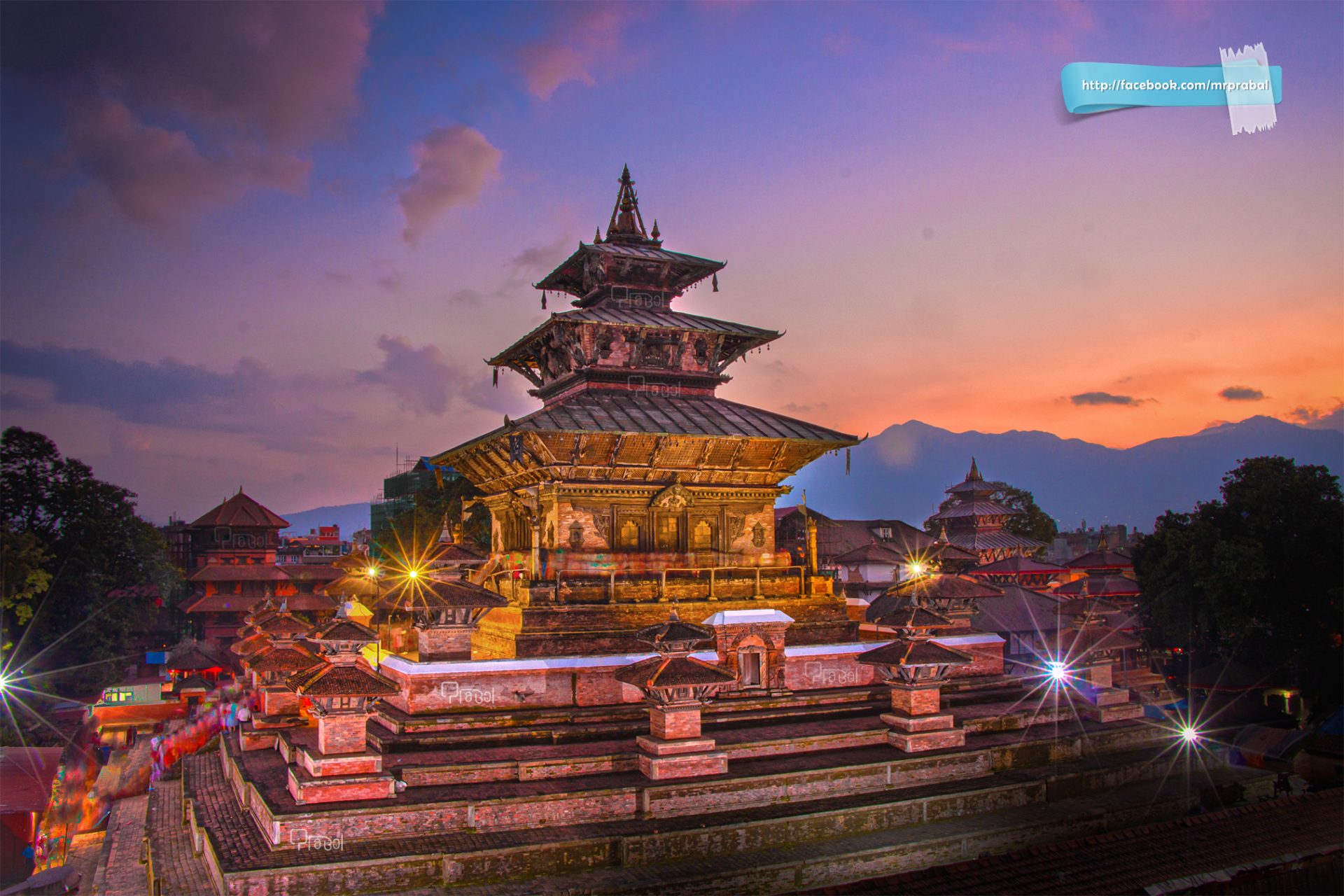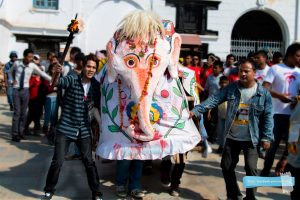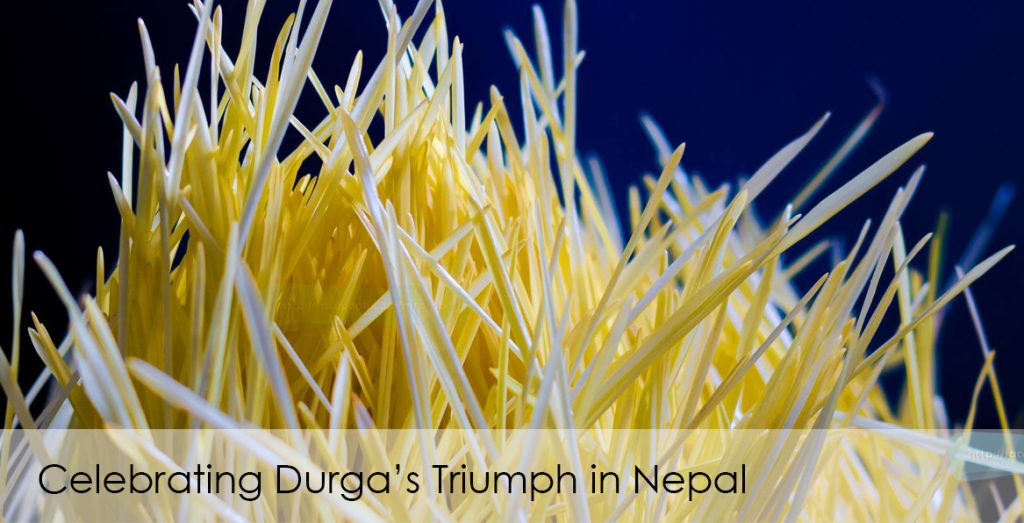
Celebrated with great delight and passion, Dashain Festival, also known as Vijaya Dashami, is the most important Hindu holiday in Nepal. The event lasts for 15 days and often takes place in September or October, depending on the lunar calendar. Every day of the festival has unique importance, starting with Ghatasthapana and ending on the full moon day.
Mythological Stories Of Dashain Festival
The triumph of good over evil is Dashain Festival’s central theme. It is believed that Goddess Durga, who stands for the bad powers, battled the demon Mahisasur during Navaratri. All the gods joined together to create Durga since they were unable to fight Mahisasur on their own. On the tenth day, known as Vijaya Dashami, Durga killed the demon after a nine-day, bloody struggle. This day represents the victory of morality over immorality.
The Nine Forms of Goddess Durga
- Durga: The warrior goddess with ten hands, symbolizing strength.
- Bhadrakali: A gentle form of Durga, representing the auspicious power of time.
- Amba (Jagadamba): The mother of the universe, symbolizing nurturing love.
- Annapurna: The goddess of food and plenty.
- Sarvamangala: The goddess of joy and happiness.
- Bhairavi: The fierce and destructive form of Durga.
- Chandika: The wrathful and furious form, symbolizing fierce protection.
- Lalita: The beautiful and playful form, symbolizing attraction and allure.
- Bhawani: The giver of life, depicted with eight arms holding various weapons.
Rituals of Dashain Festival
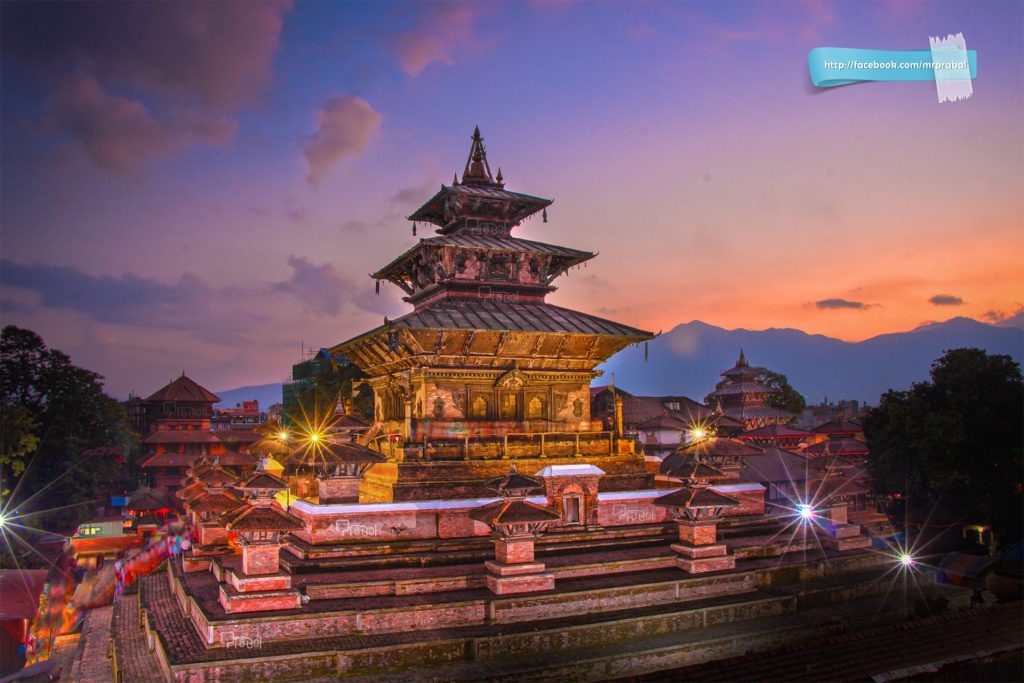
Throughout the 15-day celebration, there are customs specific to each day. Ghatasthapana symbolizes the beginning of the celebration and the installation of a sacred vessel, known as a ‘kalash’, which represents Durga. Sown in a holy chamber around the kalash, barley seeds develop into ‘jamara’, a yellow grass utilized in the tika rite on the tenth day.
On the seventh day, known as Fulpati of Dashain Festival, sacred flowers and leaves are brought from Gorkha to Kathmandu in a grand procession. This day holds royal significance, with ceremonies observed in the presence of the army and government officials.
The eighth day of Dashain Festival, Mahaasthami, is marked by animal sacrifices to appease the goddess. While many orthodox Hindus perform these rituals, others offer symbolic sacrifices like vegetables, coconuts, and eggs.
The ninth day of Dashain Festival, Navami, is regarded as the most significant for animal sacrifices. Buffaloes are sacrificed in huge quantities because it is said that on the last day of his fight with Durga, Mahisasur assumed the form of a buffalo. In addition, families worship nine little girls, which stand for the nine incarnations of Durga, by giving them presents and food.
The Day of Victory: Vijaya Dashami
The tenth day is known as Vijaya Dashami or Dashami of Dashain Festival. This day, which marks the triumph of good over evil, is marked by the goddess Durga’s victory over Mahisasur. Family members get tika and jamara, or blessings, from their elders on this day. Applying tikka, a concoction of rice and red powder, to the forehead is a sign of wellbeing and protection. To exchange blessings and well wishes, relatives travel great distances to see one another.
The Final Days and Kojagrata Purnima
For four more days following Dashami, people visit their relatives to receive blessings and tika. Kojagrata Purnima, or “the night of awakening,” is the full moon day on which the celebration ends. In the hopes of bringing luck and prosperity into the upcoming year, many remain up late on this night to worship Mahalaxmi, the goddess of wealth.
The Cultural Significance of Dashain Festival
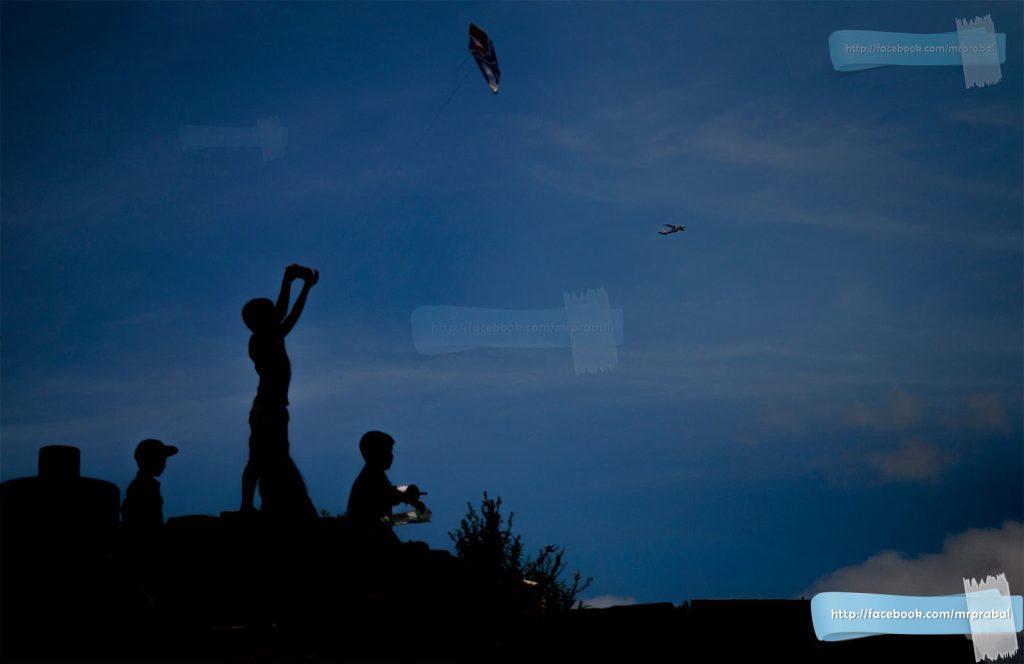
In addition to being a religious holiday, Dashain is a time for festivals, feasting, and get-togethers with family. It’s a time when folks make special meals, clean and decorate their houses, and purchase new clothing. The festival also has a number of fun activities, including as playing on traditional swings known as “ping” and flying kites.
For many families, Dashain is the only time of the year when they get to see their distant relatives. The festival strengthens familial bonds and is a time for reconciliation and forgiveness.
Modern-Day Celebrations
Even though many people still observe old customs like animal sacrifices, there is a growing recognition that certain components of the celebration need to be modernized. Nowadays, a lot of people choose to make symbolic sacrifices, and social events and family get-togethers now take center stage.
In summary, Dashain is a celebration that personifies the spirit of harmony, happiness, and the victory of good over evil. It is the most loved and awaited holiday in the nation since it is an opportunity for Nepalis to unite and enjoy their rich cultural history. You can see more festival related photos at https://prabal.tuladhar.info/Festival/

